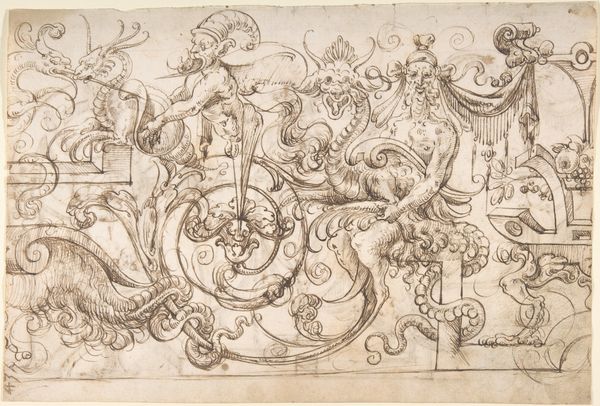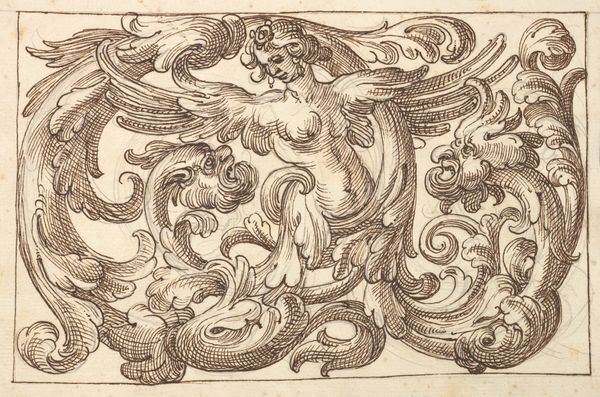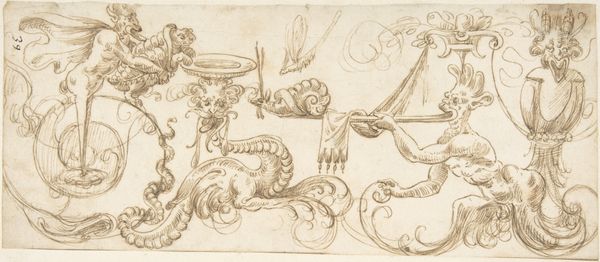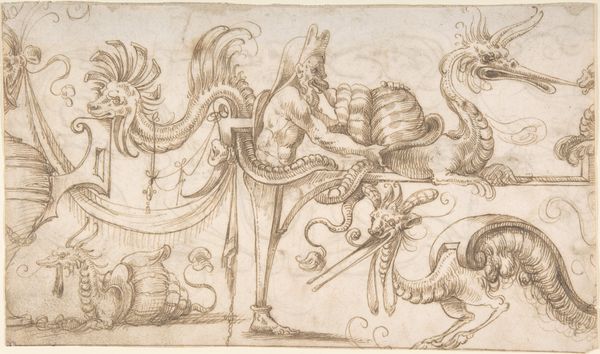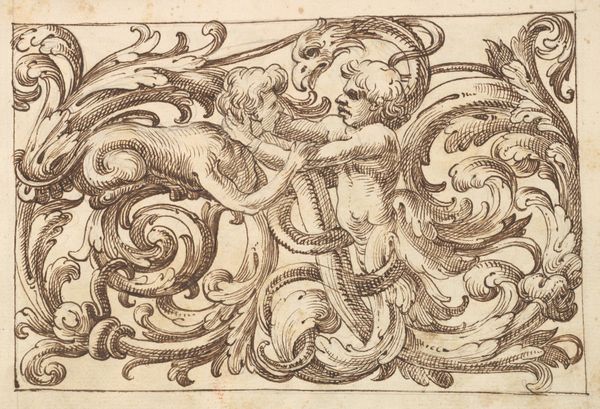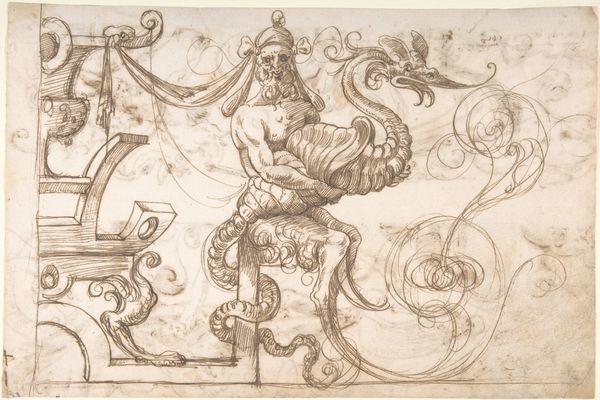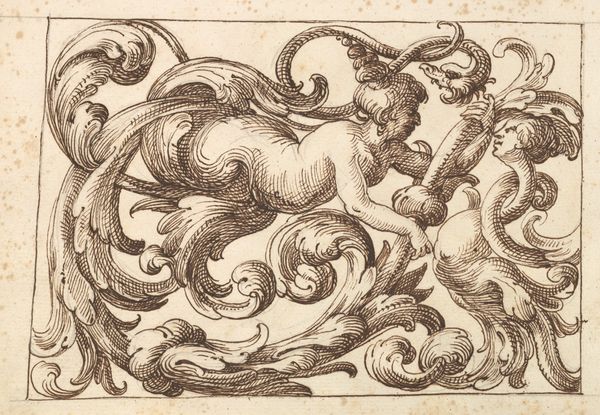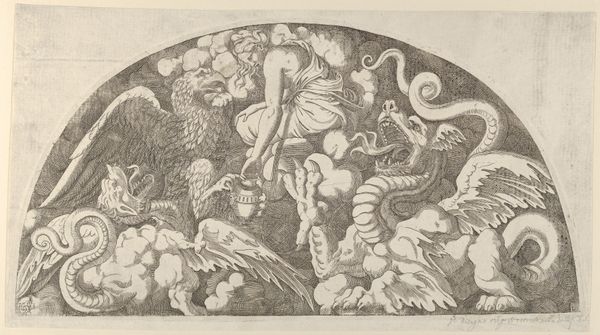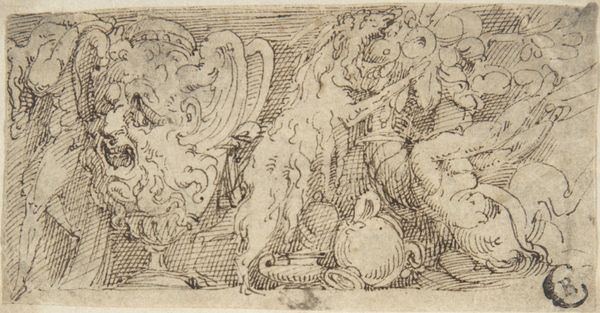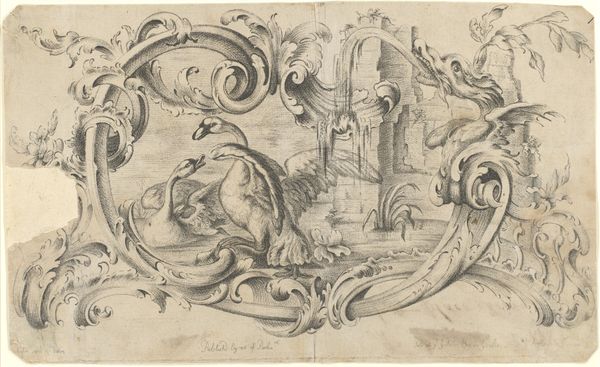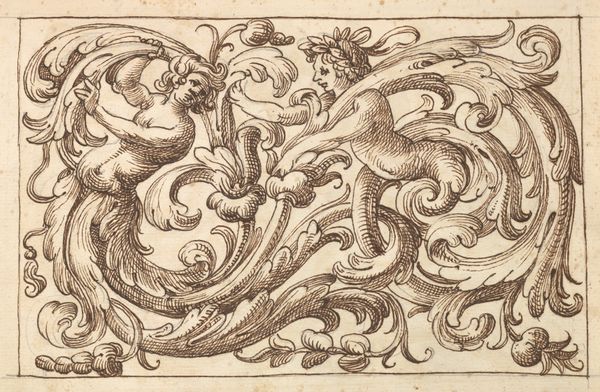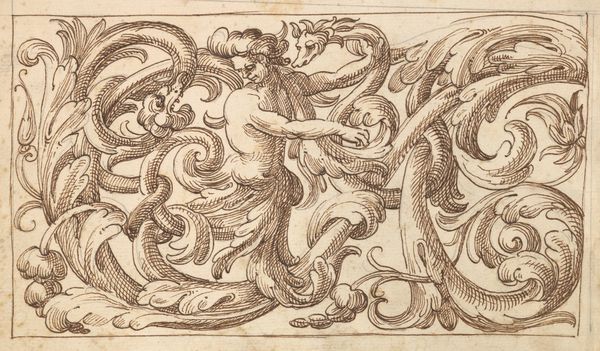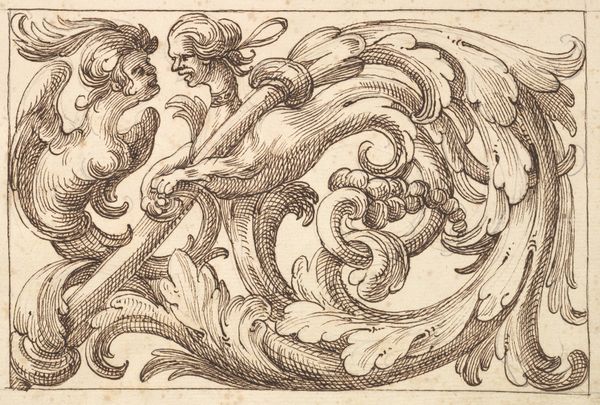
Satyr riding a fantastical creature, snail-like creatures 1540 - 1550
0:00
0:00
drawing, print, ink
#
drawing
#
ink drawing
# print
#
pen illustration
#
pen sketch
#
fantasy-art
#
mannerism
#
figuration
#
ink
Dimensions: 5 x 8-15/16 in. (12.7 x 22.7 cm)
Copyright: Public Domain
Curator: Good morning. Let's turn our attention to this striking ink drawing, "Satyr riding a fantastical creature, snail-like creatures" by Andrés de Melgar, created sometime between 1540 and 1550. It’s currently housed at the Metropolitan Museum of Art. Editor: Well, my first impression is definitely... strange. There's a darkness to the piece, a bizarre confluence of figures that feel almost unsettling, despite the playful nature of the lines. It reminds me a little bit of Bosch's more unsettling works. Curator: Bosch is a fitting comparison. This drawing feels steeped in the symbolic language of Mannerism, where the distortion of forms and the exploration of the grotesque serve to express complex psychological states. Look at the satyr, for instance. It’s a familiar figure from classical mythology, but here, Melgar gives it a peculiar, almost demonic air. It’s as though he’s grappling with humanity's darker impulses. Editor: Precisely! The satyr isn't idealized. It's twisted, hinting at suppressed desires and maybe social anxieties of the time, masked by the visual license of the art world. That juxtaposition, the monstrous hidden within the supposedly known, says something about how society controls or doesn’t control such forces. Curator: And consider the "fantastical creature" it rides. Its composite nature, the snail-like adornments throughout the drawing – they feel like visual metaphors, perhaps representing the slow, insidious creep of vice or the burden of our primal instincts. The recurring snail motifs… could there be an alchemical reference as well? A transformation hinted at? Editor: Perhaps. Or even referencing a certain social ennui; the slow pace of societal progress or a satire of the upper class's detachment. The original intended audience matters here. Was it made for a learned elite, in court maybe? Or meant for wider distribution through prints? These aspects would radically reshape how we consider this visual. It reflects much on who controlled image circulation and for what purposes. Curator: A pertinent point. Knowing the work circulated as a print helps broaden our view. It moves this from a personal expression into something that likely reflects shared cultural anxieties or a specific patron's interests. And the very act of reproducing and distributing these images... that’s a political act. Editor: Indeed. And now, I am wondering about the social statement about how we classify 'grotesque' imagery itself. Today we celebrate freedom of image. Looking back, this shows a history of challenging convention which, in turn, advanced visual rhetoric and expression. Curator: Yes, an exercise of aesthetic freedom to show what wasn’t allowed elsewhere. Looking at "Satyr riding a fantastical creature" now gives insight into an individual and a broader society that struggled with what it meant to be human in all its complexities.
Comments
No comments
Be the first to comment and join the conversation on the ultimate creative platform.
